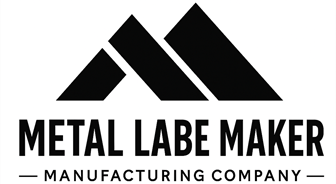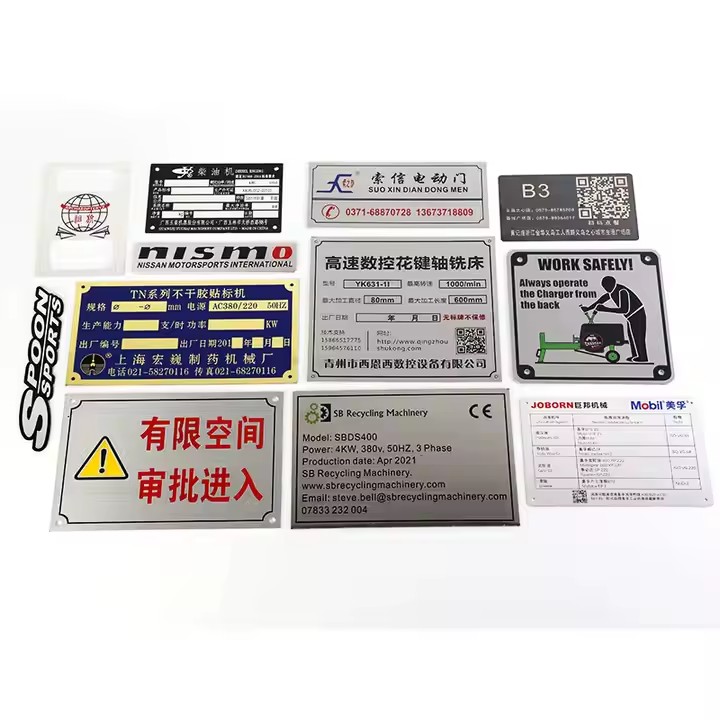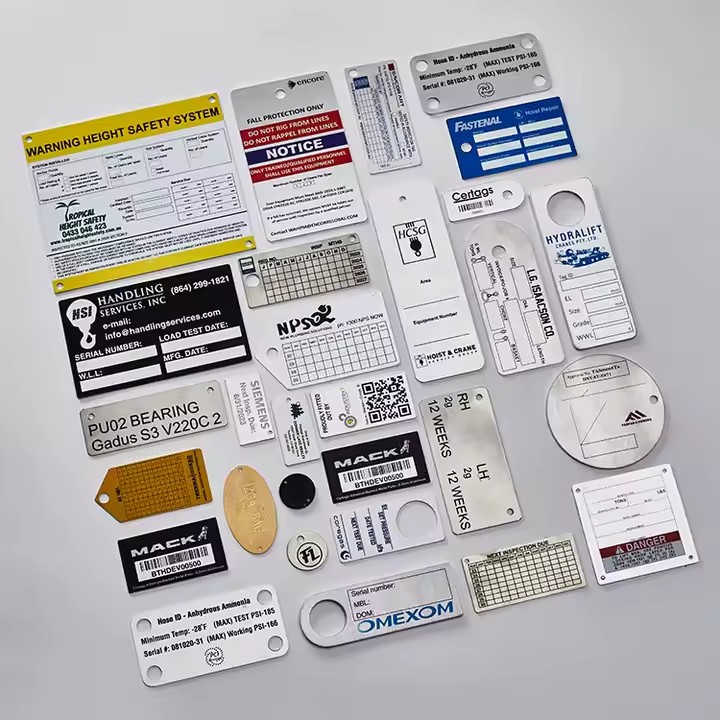Stainless Steel Labels vs Other Metal Labels: What’s the Difference?
When choosing metal labels for industrial, commercial, or decorative use, stainless steel is a top contender—but it’s not the only option. Other popular metal label materials include aluminum, brass, and copper. Each metal has unique properties that make it more suitable for specific applications. In this article, we compare stainless steel labels to other metal label types to help you make the best material choice for your needs.
1. Material Overview
| Material | Common Use Areas | Notable Characteristics |
|---|---|---|
| Stainless Steel | Industrial equipment, marine, medical | Extremely durable, corrosion & heat resistant |
| Aluminum | Electronics, automotive, packaging | Lightweight, corrosion-resistant, affordable |
| Brass | Nameplates, signage, decorative tags | Elegant appearance, good machinability |
| Copper | Electrical systems, premium branding | Conductive, visually striking, soft & malleable |
2. Durability and Strength
-
Stainless Steel: Offers superior strength and impact resistance. Ideal for heavy-duty and outdoor applications where labels are exposed to physical wear or high pressure.
-
Aluminum: More prone to dents and deformation, but still durable for light-to-medium duty applications.
-
Brass: Moderately strong but softer than stainless steel; not ideal for rugged environments.
-
Copper: Very soft and easily scratched or bent; best suited for aesthetic or light-duty uses.
3. Corrosion Resistance
-
Stainless Steel: Excellent corrosion resistance, especially grades like 316 which resist marine and chemical exposure.
-
Aluminum: Naturally corrosion-resistant and often anodized for additional protection.
-
Brass: Good corrosion resistance, but may tarnish over time without protective coating.
-
Copper: Poor corrosion resistance; it develops a patina over time unless sealed.
4. Appearance and Finish
-
Stainless Steel: Modern, clean, and industrial look. Available in brushed, polished, or matte finishes.
-
Aluminum: Can be anodized in different colors; versatile for branding.
-
Brass: Warm, gold-like appearance; great for high-end or antique aesthetics.
-
Copper: Unique reddish hue; naturally develops a vintage look as it oxidizes.
5. Cost Considerations
-
Stainless Steel: Higher initial cost, but offers long-term savings due to low maintenance and longevity.
-
Aluminum: More affordable and easy to mass-produce.
-
Brass: More expensive than aluminum, especially for thicker or engraved tags.
-
Copper: Generally the most expensive due to material costs and limited industrial use.
6. Customization Options
All metal labels can be customized with:
-
Laser engraving
-
Etching
-
Screen printing
-
Embossing or debossing
However, stainless steel holds engraving better under harsh environments, while aluminum is easier to print and color. Brass and copper are preferred for engraving in artistic or premium applications.
7. Ideal Applications by Material
| Material | Ideal Use Cases |
|---|---|
| Stainless Steel | Heavy-duty labels, marine/chemical environments, safety signs |
| Aluminum | Lightweight machinery tags, product labels, barcodes |
| Brass | Nameplates, hotel signage, control panel labels |
| Copper | Artisanal branding, vintage décor, low-voltage electric tags |
Conclusion
Choosing between stainless steel and other metal label materials depends on your specific application, budget, and desired aesthetic. Stainless steel labels stand out for maximum durability and corrosion resistance, making them ideal for industrial and demanding environments. On the other hand, aluminum offers lightweight affordability, brass delivers a luxurious look, and copper provides artistic flair.
For long-term performance in harsh settings, stainless steel is hard to beat. But for decorative or cost-sensitive projects, other metals may be the better fit.







